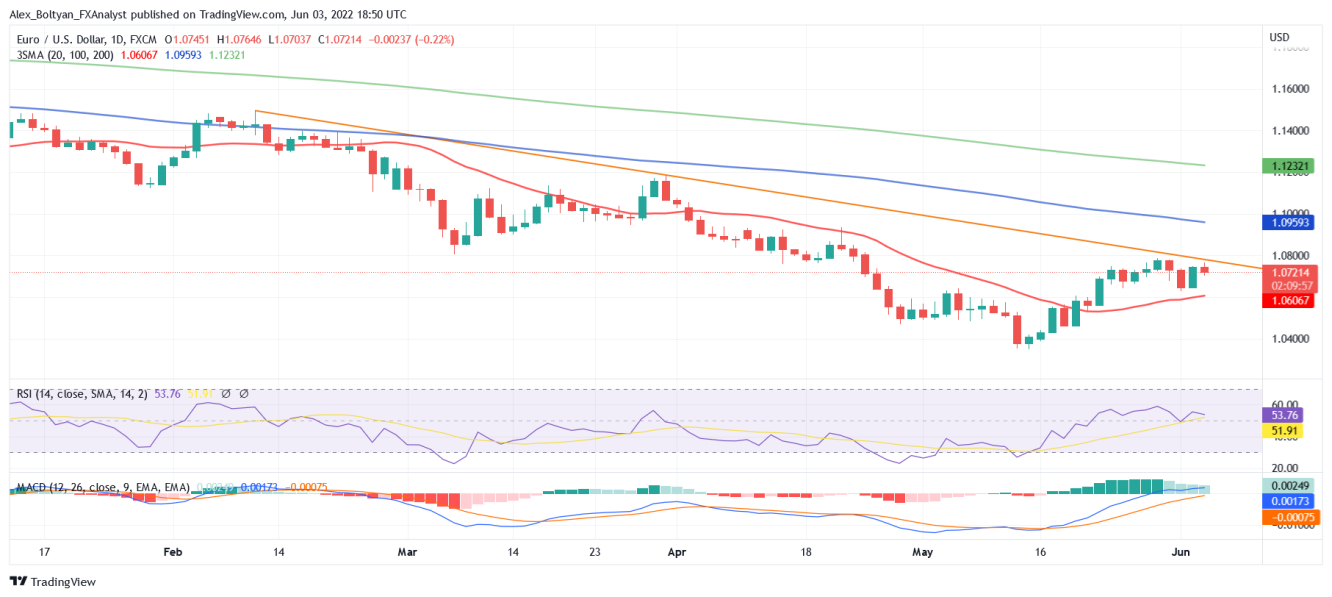The EUR/USD pair pulled back on Friday and is poised to post the first weekly loss following two consecutive gains, on the back of better-than-expected Nonfarm payrolls data and the rise in Treasury yields.
The EUR/USD spiked to a three-day high of 1.0764 in the immediate aftermath of the U.S. employment report but quickly pulled back to the 1.0720 zone, where it is set to post weekly and daily losses.
The U.S. nonfarm payrolls showed the economy created 390,000 new jobs in May, above expectations of a 325,000 gain, while the April figure was upwardly revised to 436,000. At the same time, the unemployment rate stayed at 3.6%.
Higher bond yields also underpinned the dollar. The rate on the United States 10-Year note rose for the fifth day in a row and reached a high of 2.986%.
Although it might be too soon to assess the impact of the Fed's contractive monetary policy, today's figures provided some comfort to investors worried about the effects of higher rates on jobs and growth.
From a technical perspective, the EUR/USD outlook remains slightly tilted to the upside according to the daily chart, as indicators hold in the positive but show signs of decreasing bullish momentum.
At the same time, the reiterated failure of the EUR/USD to break above a descending four-month-old trendline, currently around 1.0780, could pose a threat to the bullish scenario. The pair needs a decisive break above this resistance to pave the way to more gains, with 1.0860 and 1.0900 as the next targets.
On the other hand, immediate support is seen at the 1.0600 area, where the 20-day SMA reinforces the psychological level. Loss of this area would worsen the short-term outlook, exposing the 1.0530 zone.


